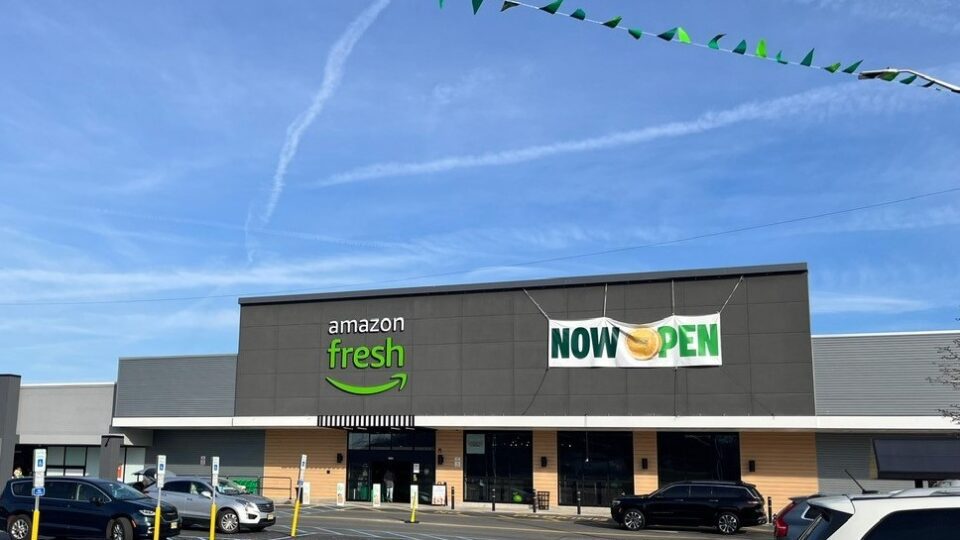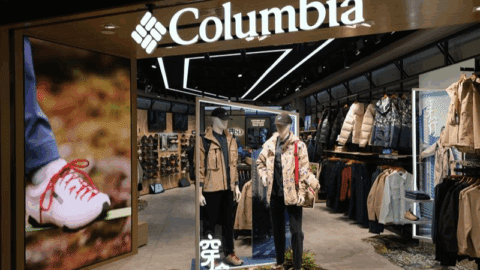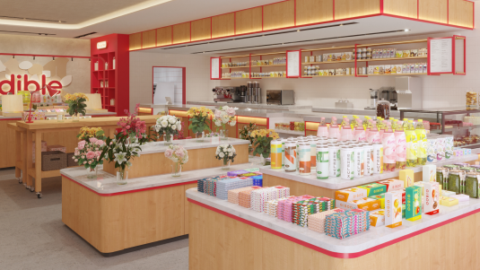In 2020 my beloved local Fairway went under, and for five years the store space has languished, sitting dark and empty alongside several other shuttered chains: Modell’s, Subway (although somehow the Kohl’s has survived). However, one month ago the lights turned back on — with bright green flag chains strung across the parking lot and a large banner, Amazon Fresh announced that it was now open for business.
On Sunday I did my weekly shopping at the store to find out if Amazon Fresh might be able to fill the hole left by Fairway, literally and figuratively. Here’s what I discovered about Amazon’s latest wave of grocery retail development:
First, a Little Fresh History
Those of you who have followed the Amazon grocery saga know that the tech giant has struggled to find its footing in this category since its 2017 $13.7 billion acquisition of Whole Foods. While Whole Foods’ performance has remained strong, Amazon has received mixed results with its efforts to integrate its tech into the Whole Foods stores while at the same time building out the separate Fresh banner.
New Fresh builds were put on an indefinite hold in 2023, and some stores were shuttered as Amazon executed what Coresight Research described as “a brick-and-mortar retreat to grocery.” (Amazon’s other attempts at brick-and-mortar have fared even more poorly. See the closure of Amazon Style; the 2022 closure of all Amazon 4-star, Books and Pop Up stores; and the Amazon Go pullback and pause.)
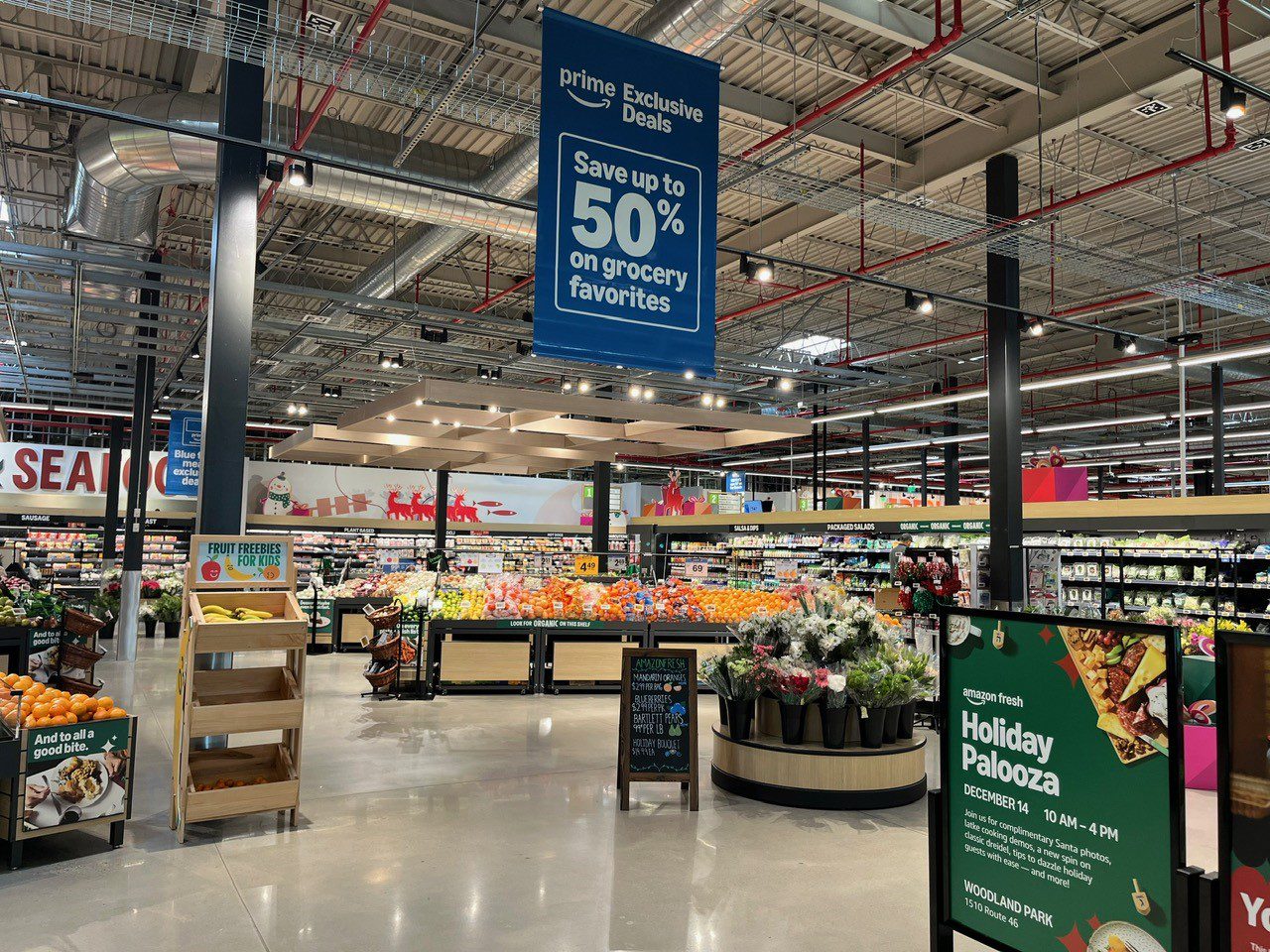
But Amazon isn’t ready to give up on having a grocery store that carries its name, so in August 2023 the company revamped its Fresh store design, beginning with two stores in Illinois. The gist of the redesign was a renewed focus on product selection and layout, essentially bringing the stores more in line with core grocery tenets: more than 2,000 national and private label products were added, prices were lowered, promotions were increased, signage was refreshed and made clearer.
“We see price as an important differentiator for Amazon Fresh customers and as a result, over the last year we have lowered the prices on thousands of items and tripled the size of the promotions we offer, delivering millions of dollars in savings to customers,” said Claire Peters, Worldwide VP of Amazon Fresh when the store improvements were rolled out in 2023. “We’re especially excited about the redesigned Amazon Fresh stores and the positive feedback we’re hearing from our customers in Chicago. But that doesn’t mean our job is done. We will continue to iterate and experiment, introducing new features and programs in our Amazon Fresh stores to better serve our customers.”
Amazon Fresh is Big, Bright; Focus on Price is Clear
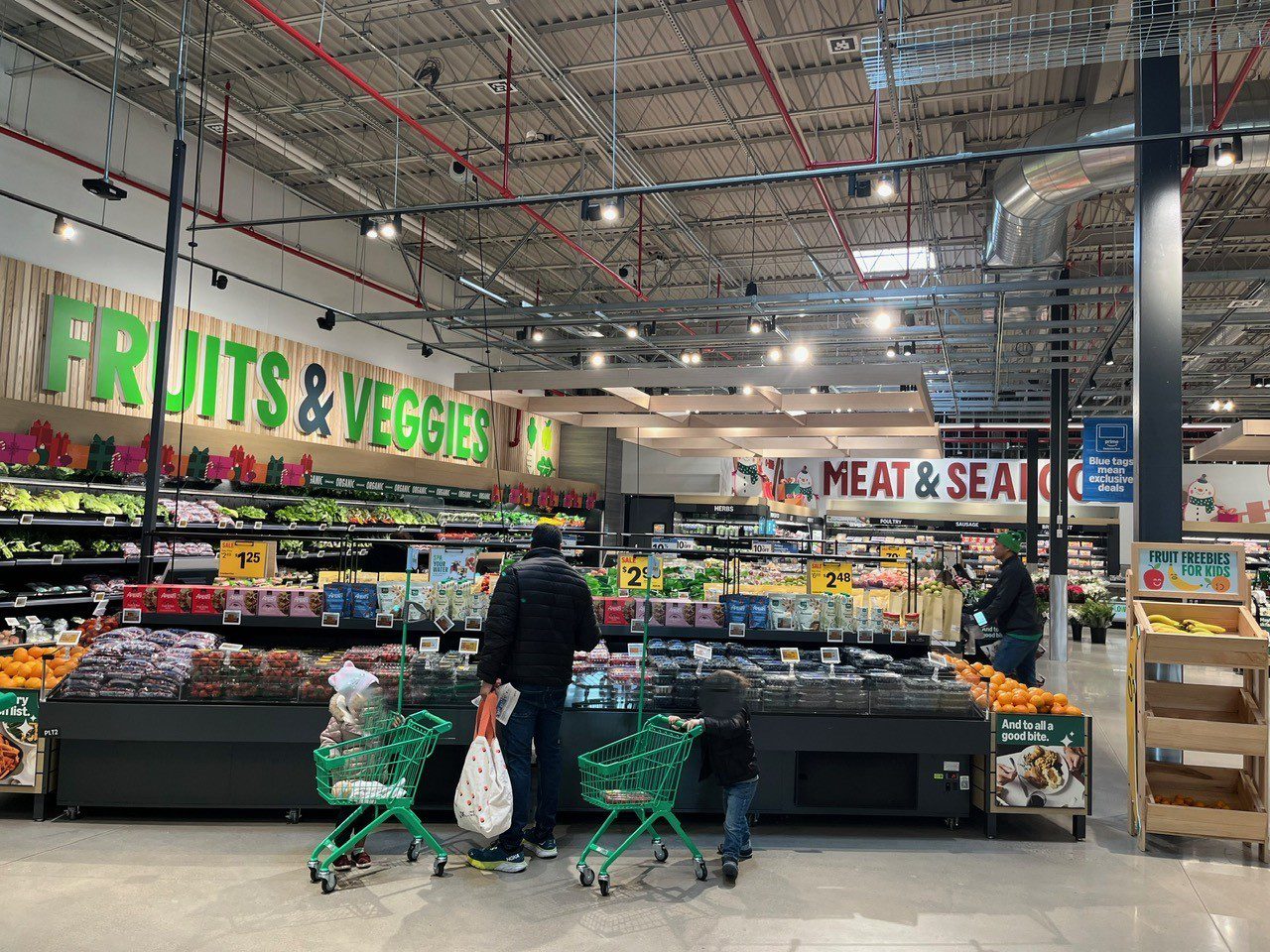
Perhaps more so than in any other category, design takes a back seat to function at grocery. It doesn’t matter how fresh and fun your store looks, if it doesn’t have the products and experience consumers want, they won’t be back. Balancing its signature innovation impulse with the expectations of customers in a needs-based category has been one of Amazon’s biggest stumbling blocks with grocery. With the new Fresh stores, Amazon seems to be closer to finding the right balance, but it’s still missing the mark on some of the grocery basics.
As one might expect with a completely new build-out, the new Amazon Fresh in Woodland Park, N.J. is clean, spacious and bright. Signage abounds, much of it focused on the savings that Prime members enjoy. Larger directional wall signage subtly draws on the aesthetic of Whole Foods’ 365 private label brand in both color scheme and vibe, and indeed the brand is present throughout the store.
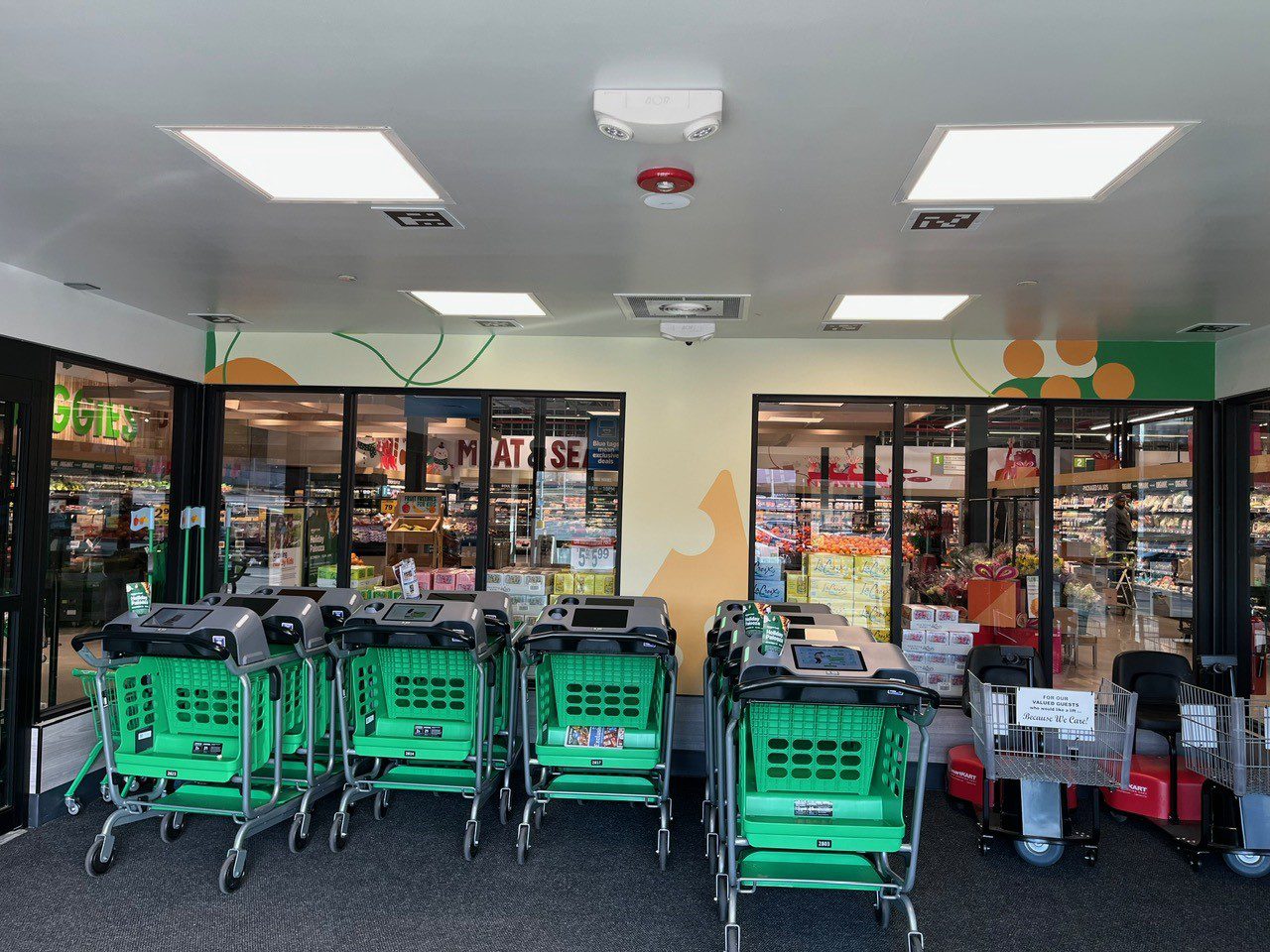
Customers enter through a lobby filled with Amazon Dash Carts (the company’s smart carts), and signage explaining how to use them. (Regular carts, albeit green, are available outside.) Within the store itself, shoppers are greeted by a full-service Krispy Kreme (a partnership that was included in the 2023 revamp) at the front of the store, behind which lie the produce and meat departments.
Fresh in Many Facets, but Fresh Produce was Lacking
In its design the store feels fresh but familiar in a comforting way. That’s a win for Amazon, considering its biggest challenge in grocery so far has been not turning customers off with too much newness in a shopping experience that is primarily focused on necessities. But for me, the biggest test of a grocery store depends on freshness of another kind — the produce. In that regard, Amazon also meets the challenge.
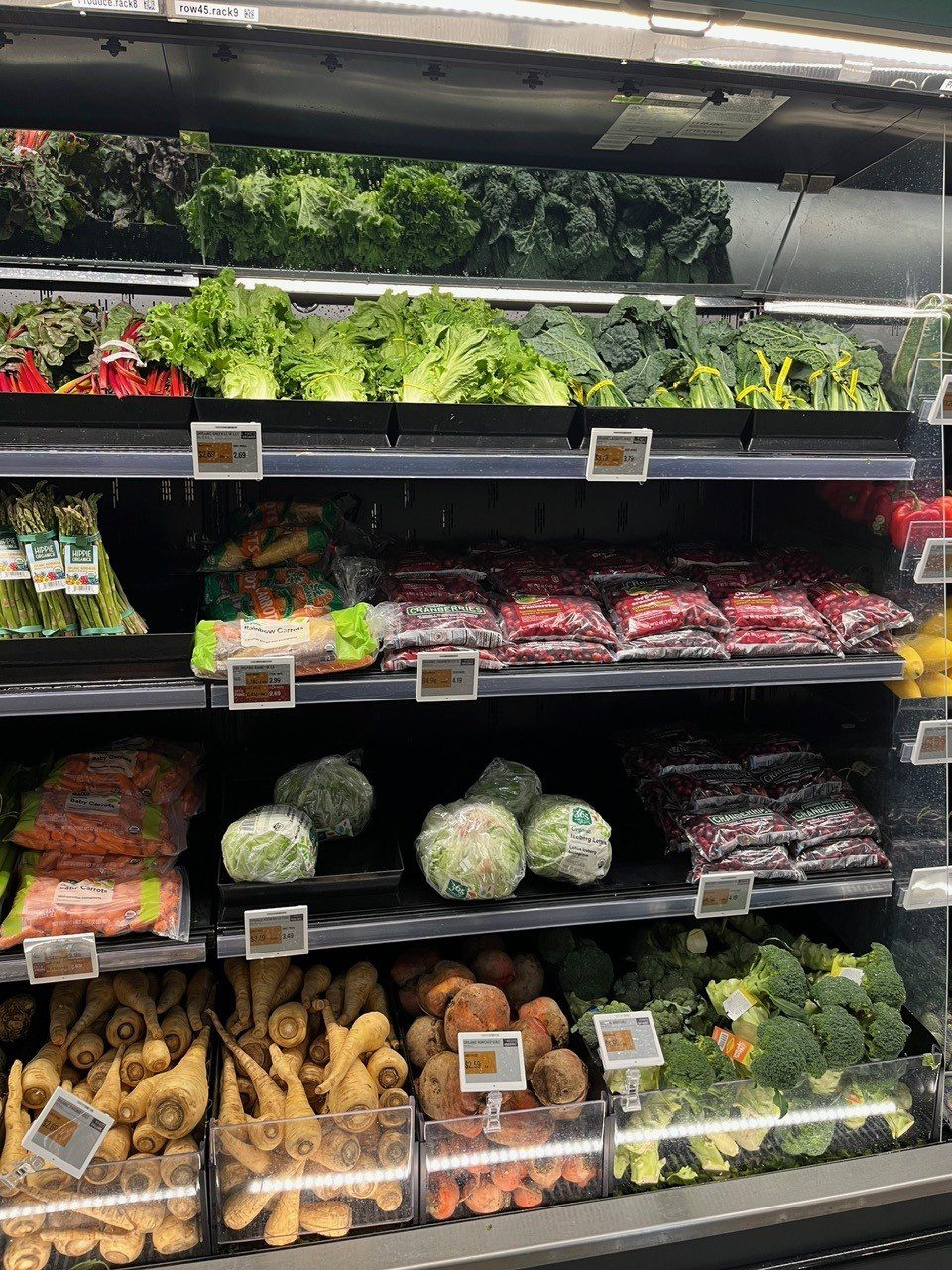
However, my other big demand of the place I give my grocery dollars is selection, and there Amazon still has some work to do. Whole sections of shelves in both the produce and meat departments were empty, while other sections were filled with an overwhelming amount of a singular product, seemingly to fill space. (Case in point, the “Organic” section featured a total of just four bags of carrots alongside seven rows full of cranberries).
Perhaps this is merely a case of first-month hiccups and will be resolved as the store matures, but it’s not a great look for a store trying to win customers away from the many other nearby options. In one regard, Amazon appears to have made significant strides — its selection of national brands; I found all the name-brand staples I need every week, so one point for Amazon Fresh in its move to ensure the right mix of private label and CPG staples.
The rest of the store follows a fairly typical grocery format: deli, prepared foods and bakery at the back with shelf-stable items, ingredients and household goods in aisles along the center; dairy is along the back at the opposite end of the store from produce.
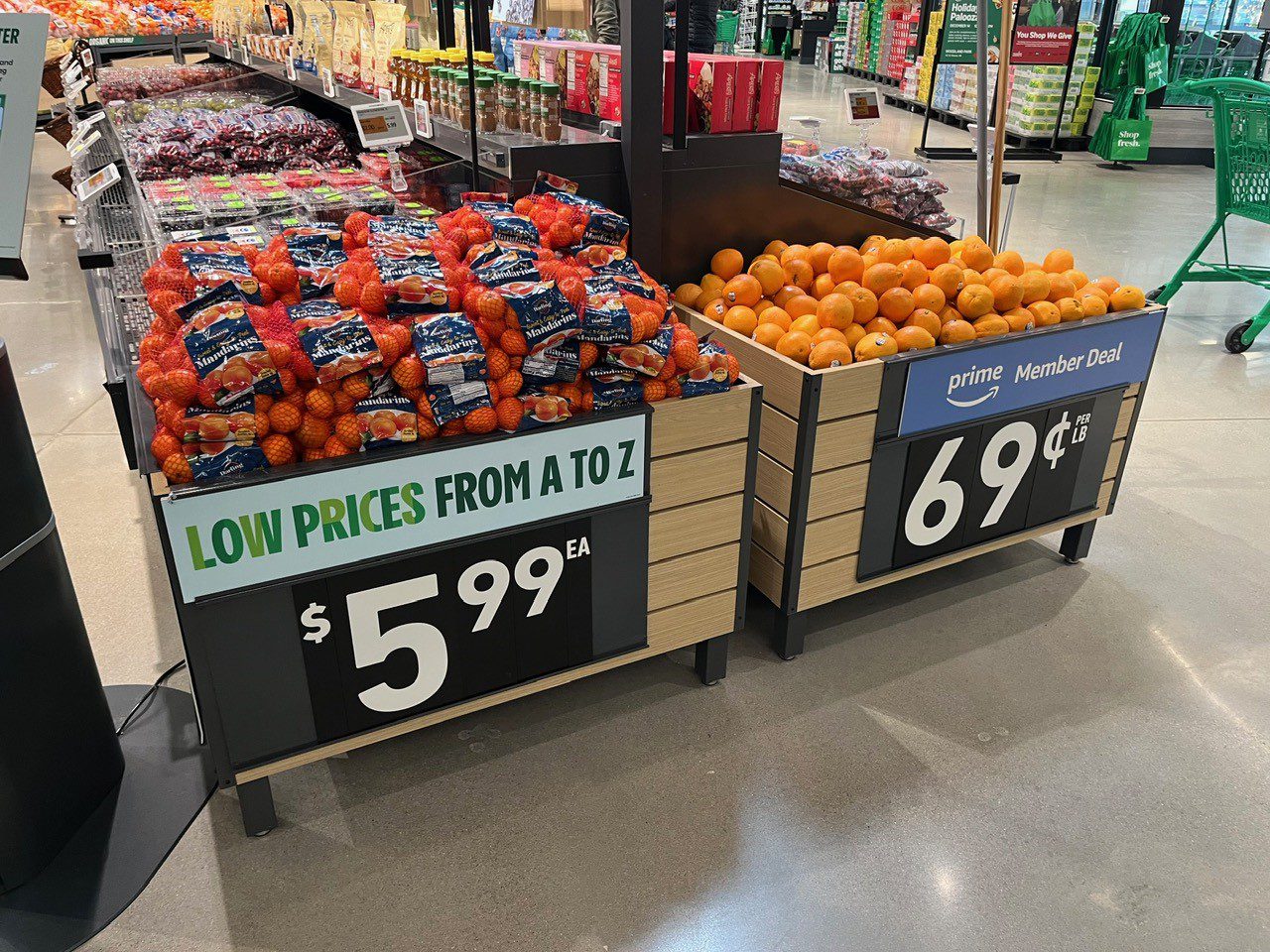
The store’s competitive pricing was indeed touted on an almost overwhelming amount of signage through the store, and overall, prices seemed to be in line with other grocers in the area. The savings Prime members enjoy was a big focus (my Prime savings totaled $7.64 in addition to $15 in non-Prime promotions on a $350 cart). But that raises a question: Given that Prime is a paid membership — unlike most grocery loyalty programs, which are free — does Amazon risk turning off an entire segment of the population not willing to pay for a membership? That said, 180 million U.S. consumers already are Prime members, so the customer base is large even if that ends up being the case.
Pickup/Returns Counter, Eat-in Café Highlight Larger Ambitions
Two notable additions to the standard grocery store design stand out: A large in-store counter and separate entrance for Amazon.com order pickup and returns; and a large eat-in café area at the front.
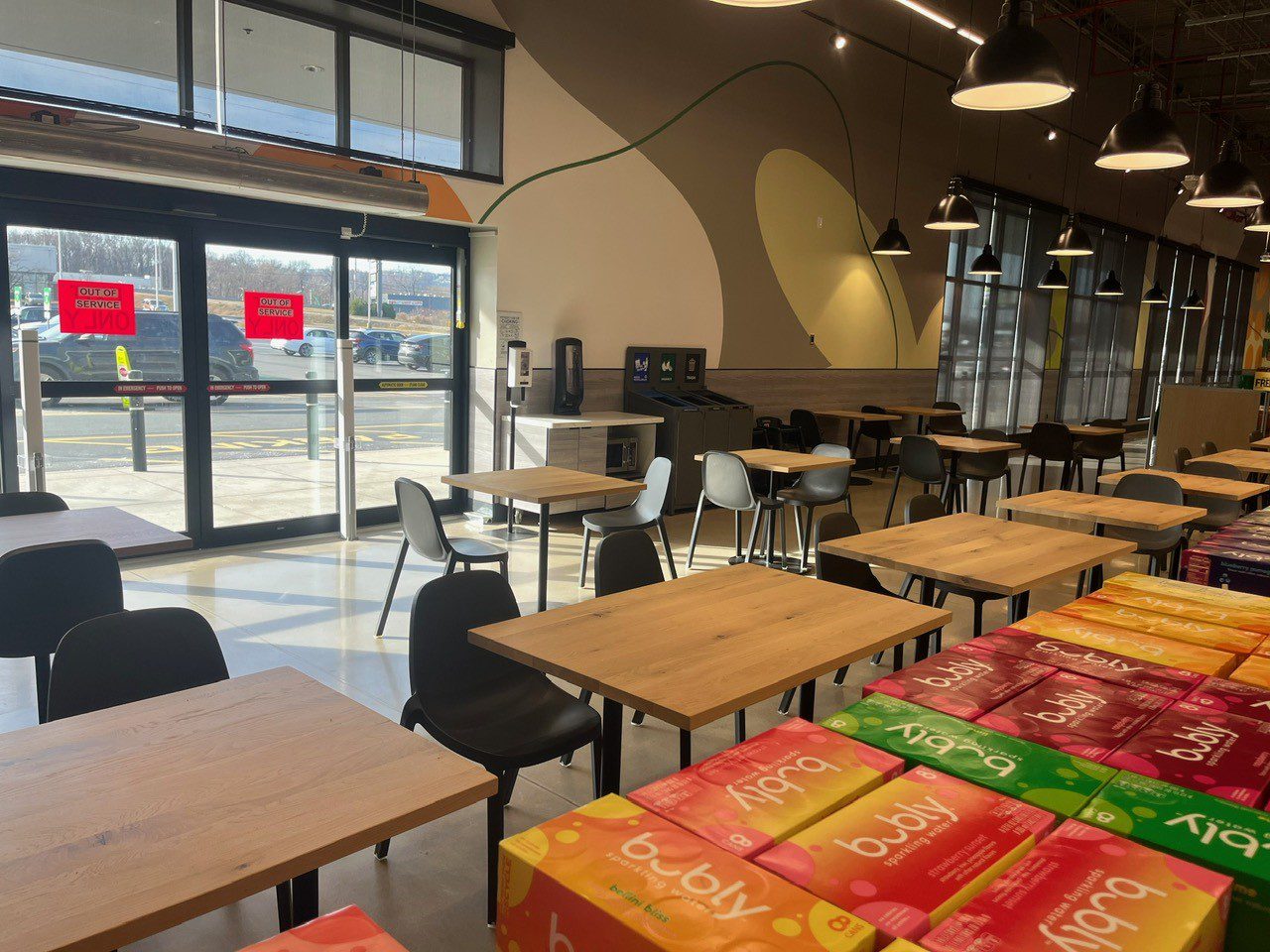
The first makes perfect sense and, as it has at other stores including Whole Foods, will likely be a great traffic driver for the store.
The second was a bit puzzling. Clearly Amazon hopes to make a prepared food play to extend dwell time, along the lines of Ikea or Wegmans, but the space was abandoned when I visited. Not to mention that the deli’s prepared food section offered very little to entice someone to take a break from shopping and sit down to eat. Perhaps that will also be expanded as the store becomes more established, and the Krispy Kreme might help, but at the moment, it simply felt like a restaurant in a strip mall that no one wants to visit.
A Streamlined Smart Cart Experience
As one would expect from Amazon, interesting tech made an appearance throughout the store, although none of it was forced on the shopper. That subtlety is likely the result of another lesson learned — one of the biggest adjustments Amazon has made to its Fresh format was removing its cashierless Just Walk Out (JWO) technology from all stores, after early tests indicated it just wasn’t working for grocery shoppers.
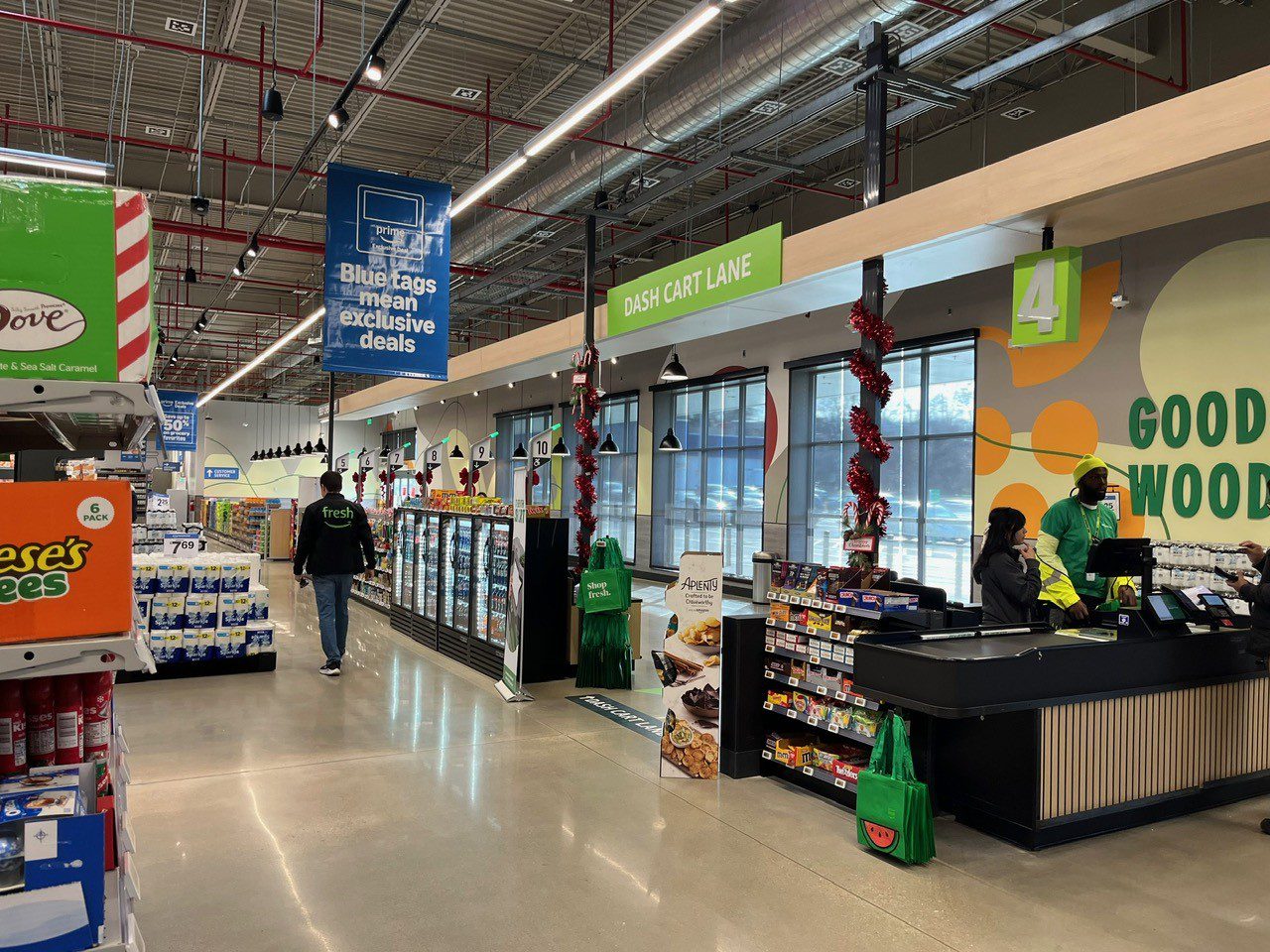
Instead, the company is leaning into its Dash Carts, and the smart cart experience at Amazon Fresh is a level above that of other stores. While I didn’t use a Dash Cart during my trip, I have used smart carts at other grocers, and here’s the big difference — if you use a Dash Cart at Amazon Fresh, when you’re done with your shopping you literally just walk out of the store.
That’s because smart carts from third parties that are deployed at other grocers (like the one I tried at ShopRite), aren’t linked to the POS, so there’s still a checkout moment (albeit fast). However, with Dash Cart you sign in with your Amazon Prime account at the beginning, and as long as you’re okay using the card Amazon already has on file, you just have to exit the store through a designated area to indicate that you’re done shopping and ready to be charged. A very nice streamlining of the experience, I have to say.
Will ESLs Lead to Digital-Style Dynamic Pricing?
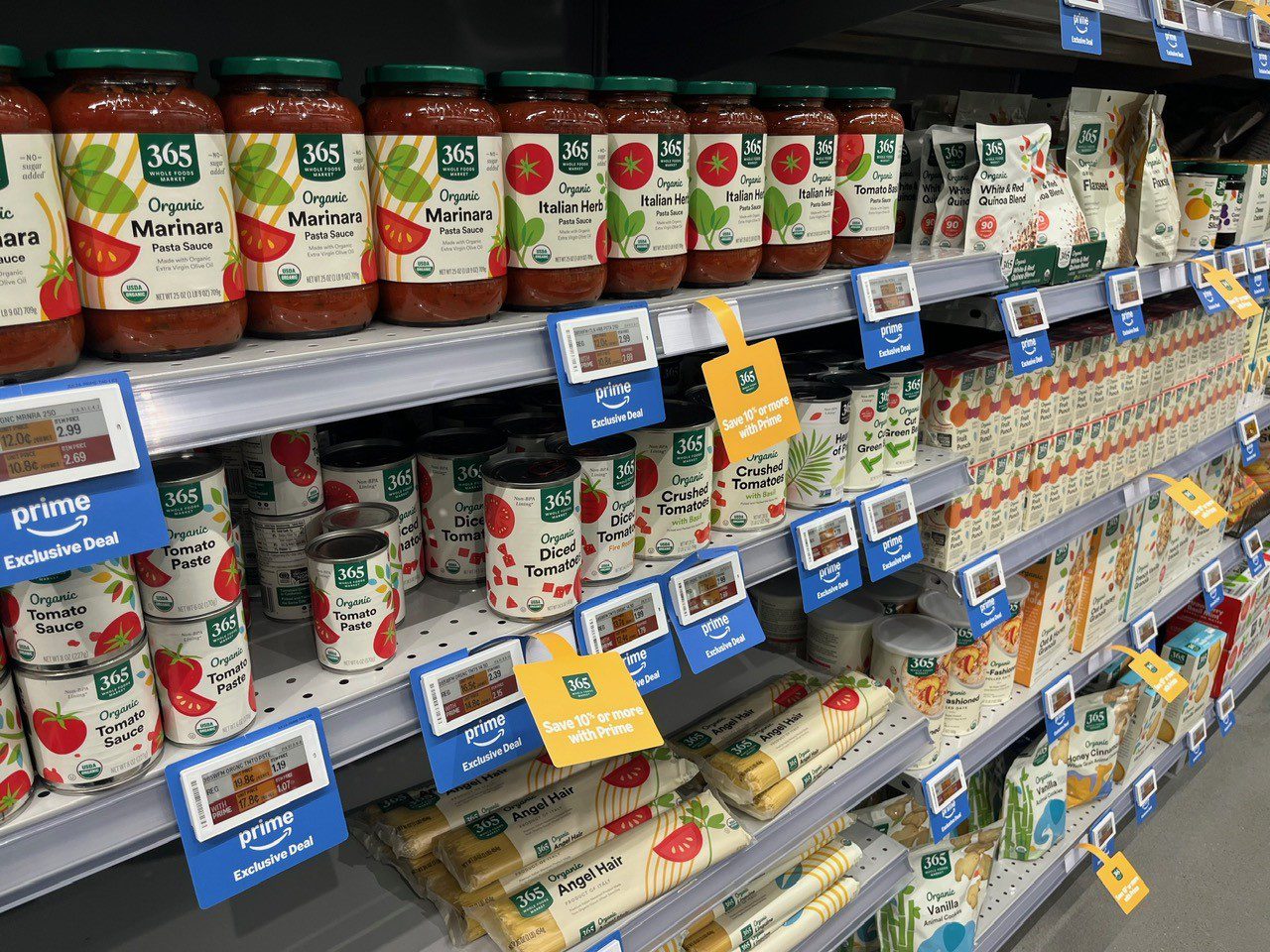
Another innovation that customers may have begun to see at other grocers are electronic shelf labels (ESLs), and at Amazon Fresh there is not a single paper-based shelf label in sight. Amazon does have the advantage of building Fresh stores with ESLs integrated from the outset, rather than having to replace and retrofit as more established grocers do.
The primary advantages of ESLs tend to be for the grocers, but with new tech advancements some retailers are using them to improve the customer experience as well, helping smart cart users (and online order pickers) locate products and promotions. Amazon Fresh is clearly well-equipped for just those kinds of CX innovations.
Of course, ESLs also raise the question of whether a retailer will then begin employing dynamic pricing, which the technology makes practical in an in-person retailing environment. That’s an idea that consumers haven’t been thrilled about, but it’s certainly within the realm of possibility — particularly for Amazon, which already engages in the practice in its online store.
Removing Friction from the Self-Checkout Process
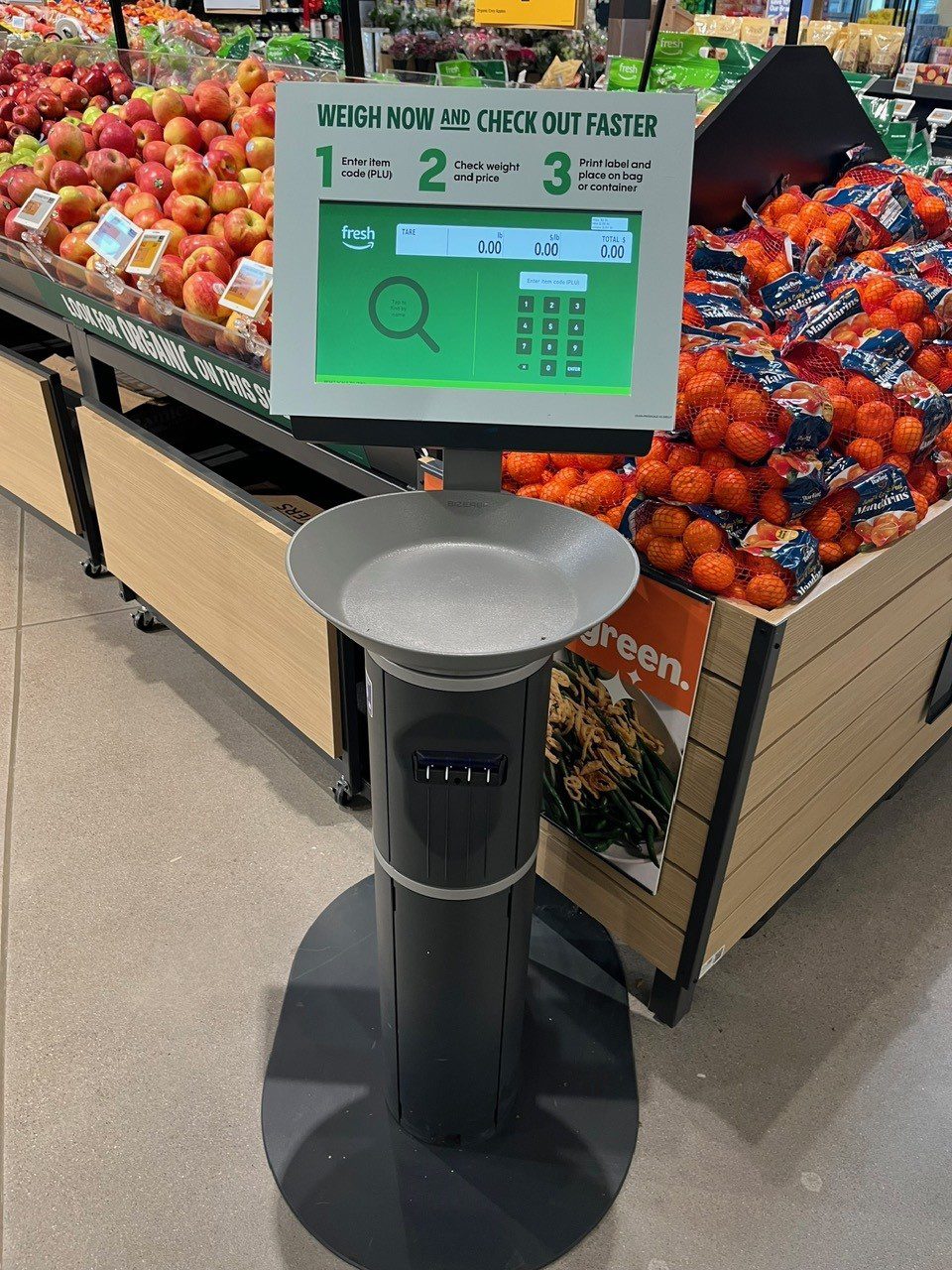
One final notable tech variation in the Amazon Fresh store was in self-checkout. First, the self-checkout stations (there are twice as many as manned lanes) feature no weight check to avoid theft. There’s a scale on the product scanner for weighing produce, but if you want you can scan items and put them directly back into your cart, or even set your purse down on the bagging station without setting off screaming alerts. It can’t be that Amazon isn’t worried about theft; more likely Amazon considers its video and computer vision capabilities (developed through its work in creating JWO) as providing sufficient oversight to avoid shrink.
And Amazon also is testing a new way to take some of the friction out of self-checkout. A series of kiosks in the produce section allow customers to weigh and price out their produce while they’re selecting it. The kiosk then prints out a label and that’s what you scan when you get to checkout. It’s an interesting potential solution to one of the biggest annoyances at self-checkout, paying for by-the-pound products.
Bottom Line: Fresh is Fine, but Still Misses on Some Grocery Basics
For me, the shopping experience was fine but didn’t offer a compelling enough reason (in the form of convenience combined with selection) to switch from my regular chain, particularly since I couldn’t get all the fresh items I was looking for. However, I’m just one customer and maybe I’m particularly picky. Another shopper next to me at self-checkout was much more enthusiastic, especially when she got her Prime member savings on the case of water she wanted.




